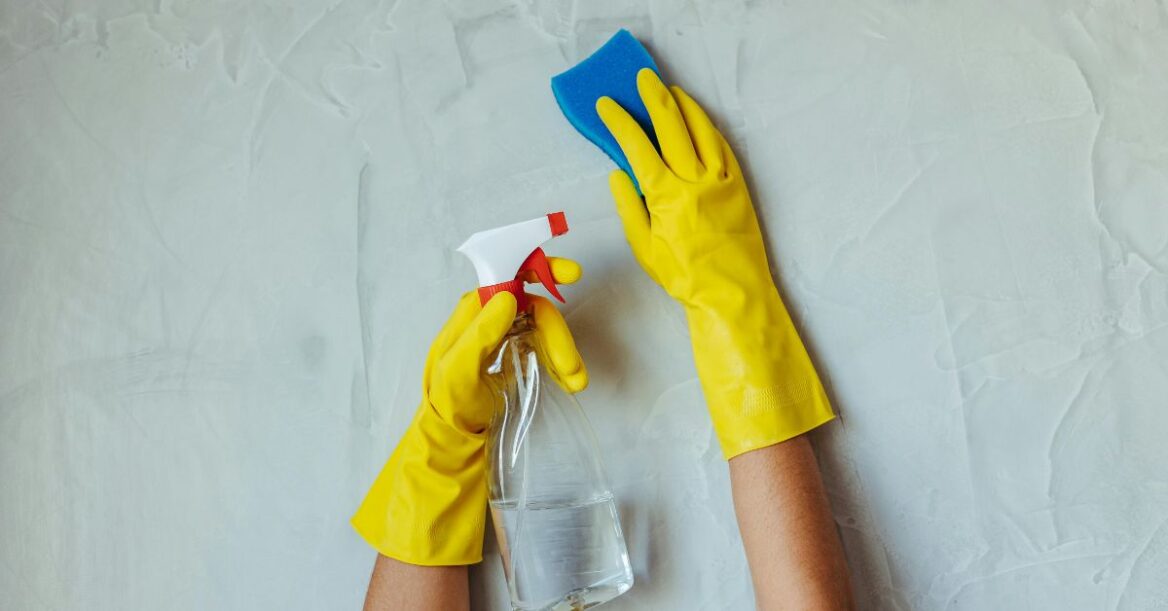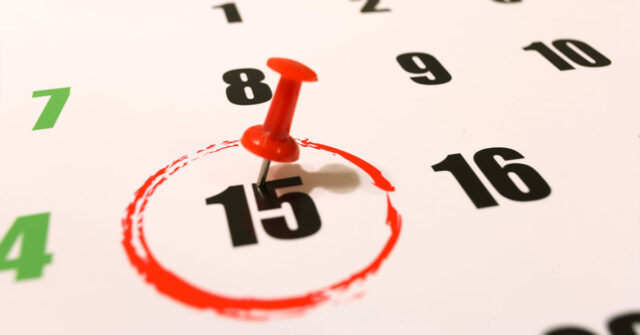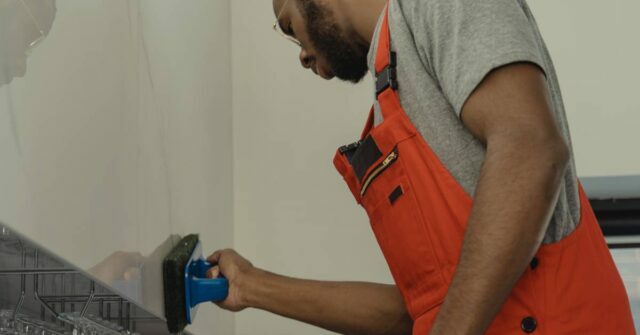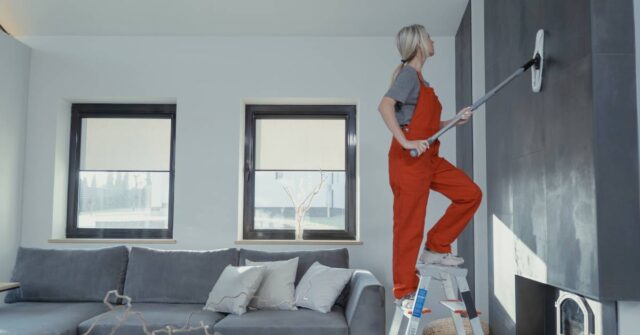Even the most beautiful paint job can lose its charm when wall stains appear.
Whether it’s greasy kitchen splatters, muddy fingerprints, or scuff marks from furniture, knowing how to clean wall stains safely can help keep your home fresh and inviting.
As Sydney’s trusted painting professionals, Advanced Painting shares the right techniques to remove stains without ruining your paint finish.
Why Wall Stains Happen – and Why Proper Cleaning Matters
Walls naturally collect marks over time. Every day life leaves behind smudges, grease spots, and accidental splashes.
Kitchens and bathrooms often show water or mould stains, while hallways and kids’ rooms get scuffs and fingerprints.
But not all stains are created equal. Using the wrong cleaner or scrubbing too hard can strip or dull your paint.
Flat and matte paints are especially sensitive to moisture and abrasives, while glossy finishes may lose their shine if cleaned incorrectly.
Proper wall cleaning not only keeps your home looking polished but also extends the life of your paintwork.
With 20+ years of professional experience, Advanced Painting understands the difference between gentle maintenance and permanent damage – and we’re here to help you get it right.


Before You Start – Test, Tools, and Prep
Preparation is key to a safe and effective clean. A few minutes spent setting up will save you from costly mistakes.
1. Test first: Choose a small, hidden patch to check how your paint reacts to cleaning.
2. Gather your tools:
- Microfibre cloths or soft sponges
- Buckets of warm water
- Mild detergent or dish soap
- Sugar soap (great for grease)
- Vinegar solution (for natural cleaning)
- Soft brush or extendable mop for higher areas
3. Safety first: Keep the area ventilated, wear gloves, and avoid soaking walls with water. Always wring out your cloth before wiping.
Painter’s tip: Not sure what paint finish you have? Glossy paints reflect light easily, while matte finishes appear flat.
If you’re unsure, our team can help identify your paint type before you start cleaning or decide if a touch-up is needed.
Step-by-Step Guide: How to Clean Wall Stains Safely
Cleaning walls doesn’t have to be stressful. Follow these steps to remove stains gently and effectively.
1. Dust and Dry Clean First
Before using water, wipe walls with a dry microfibre cloth or duster. This removes loose dust and cobwebs that could smear or scratch when wet.
2. Spot Clean Small Marks
Mix a few drops of mild detergent into warm water. Dip a soft cloth, wring it out, and gently wipe stains using light circular motions. Avoid harsh scrubbing or excess water, which can leave tide marks.
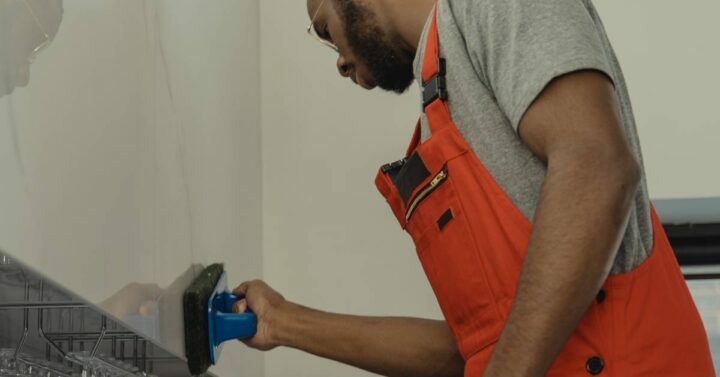

3. Treat Stubborn Wall Stains by Type
Different stains require different treatments. Here’s how to handle the most common ones safely:
- Grease stains: Mix one tablespoon of sugar soap or dishwashing liquid in a litre of warm water. Wipe gently, then rinse.
- Scuff marks: Try a damp sponge or a small amount of baking soda paste. For tougher marks, use a magic eraser carefully on glossy finishes.
- Mould or mildew: Spray a 3:1 mix of water and vinegar. Let it sit for 10 minutes, then wipe clean. Ensure good ventilation.
- Crayon or marker: Dab rubbing alcohol on a soft cloth and blot gently. Don’t rub hard, or you might lift the paint.
- Smoke or nicotine: Use diluted vinegar or sugar soap to break down residue, followed by a clean water rinse.
Always start with the mildest method first, increasing strength only if needed.
4. Rinse and Dry Properly
After cleaning, use a clean, damp cloth to remove any soap residue. Finish by drying with a towel or turning on a fan to prevent streaking and moisture damage.
How to Clean Walls with Different Paint Finishes
Not all paints respond the same way to cleaning. Using the right approach for your paint type will protect the surface and preserve its finish.
- Matte or flat paint: Very delicate. Use minimal moisture and avoid scrubbing. Blot stains instead of rubbing.
- Eggshell or satin paint: More durable but still gentle. A mild detergent mix works well.
- Semi-gloss and gloss paint: Highly washable and suitable for kitchens or bathrooms. You can use sugar soap or stronger cleaners if needed, but rinse well afterward.
Painter’s insight: If your walls have faded patches or stains that won’t come off, cleaning may not be enough. In many cases, a quick repaint restores the look instantly and adds long-term protection.
When Cleaning Isn’t Enough – Time to Repaint
Some stains penetrate deeper than the surface layer, especially grease, nicotine, or water damage.
If your walls remain discoloured or start to bubble and peel, repainting is often the smarter, longer-lasting solution.
Repainting doesn’t just cover marks – it revitalises your space and provides a clean, durable surface that’s easier to maintain in the future.
At Advanced Painting, we specialise in residential interior repainting across Sydney.
Our experienced team delivers a high-quality finish with premium Dulux and Taubmans paints, all backed by a 5-year workmanship warranty.
Ready to refresh your walls? Request a free quote today and restore your home’s beautiful, freshly painted look.
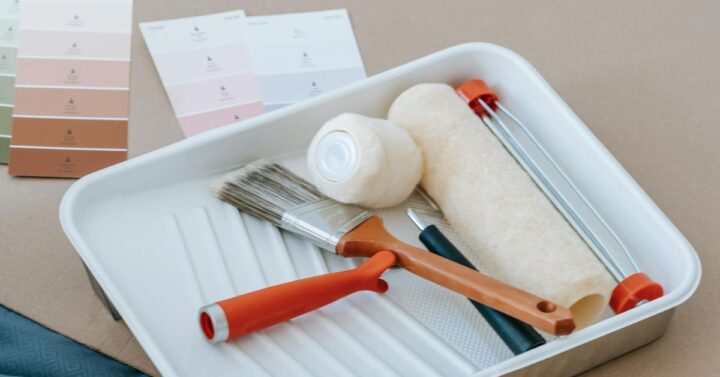

Prevent Future Wall Stains
Keeping your walls cleaner for longer is easier than you think.
- Dust regularly with a dry microfibre cloth.
- Use washable, low-VOC paints in high-traffic areas.
- Install corner guards or furniture bumpers to prevent scuffs.
- Avoid smoking indoors and use exhaust fans in kitchens and bathrooms.
- Wipe spills and splashes promptly before they set in.
Pro tip: Investing in washable paint, like Dulux Wash&Wear, can reduce cleaning frequency and help your walls stay looking new for years.
FAQs About Cleaning Wall Stains
It’s normal to have questions about the best way to clean walls without ruining the paint. Below are some of the most common queries homeowners in Sydney ask our team at Advanced Painting.
These answers are based on real-world experience and industry-approved cleaning practices, helping you protect your paintwork and keep your walls looking their best.
What is the best cleaner for painted walls?
A mix of mild detergent and warm water works best for most stains. Avoid strong solvents unless necessary.
How do you clean walls without removing paint?
Use gentle cleaners, avoid soaking the wall, and always test a small area first.
Is sugar soap safe for all paint types?
Yes, but dilute it properly and rinse afterward. Test on matte or delicate finishes first.
Can vinegar damage wall paint?
No, when diluted correctly. A 3:1 water-to-vinegar mix is safe and effective for most surfaces.
How do you clean mould off painted walls safely?
Use vinegar or a gentle mould remover, then dry completely to prevent regrowth.
How often should walls be cleaned or repainted?
Light cleaning every few months keeps walls looking fresh. Most interior paint jobs last 5-7 years before needing a repaint.
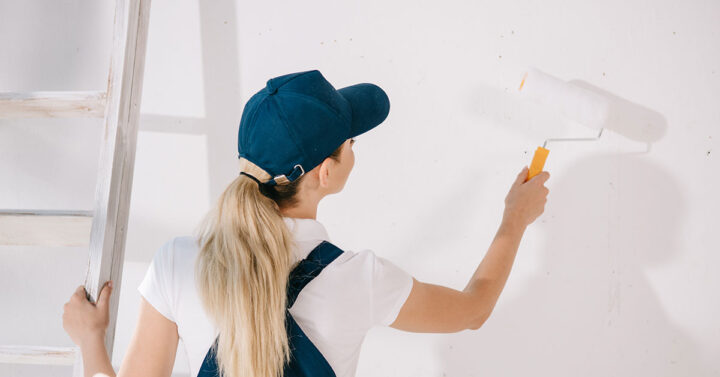

Need Professional Help Restoring Your Walls?
If cleaning doesn’t bring your walls back to life, a professional repaint might be the best solution.
Advanced Painting delivers precision workmanship, premium materials, and clean, reliable service — every time.
We’re fully insured, OH&S compliant, and trusted by homeowners across Sydney for exceptional, long-lasting finishes.
Call 0410 949 130 or request your free quote online today to rediscover that freshly painted feeling.

